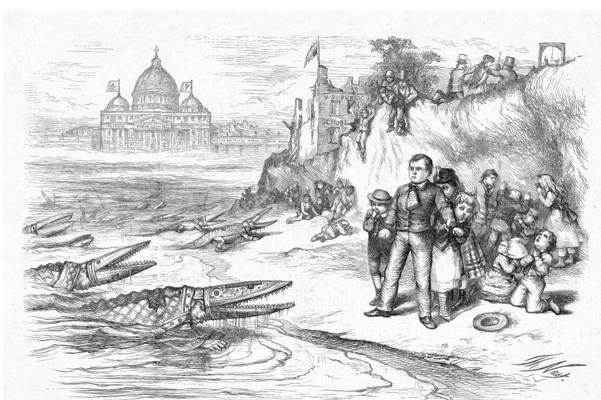
In the next judicial session, the U.S. Supreme Court will have the opportunity to right institutionalized bigotry against religious groups in Espinoza vs. the Montana Department of Revenue case.
We Americans have a real talent for making straightforward things complicated. A case in point: The First Amendment of the U.S. Constitution reads, “Congress shall make no law respecting an establishment of religion, or prohibiting the free exercise thereof; or abridging the freedom of speech, or of the press; or the right of the people peaceably to assemble, and to petition the Government for a redress of grievances.”
Regarding religion, the text seems fairly plain. Unlike the practice of European countries, the United States would not have an established religion, such as the Church of England. Countries with established religions may or may not tolerate religious diversity, but at minimum they favor a particular religious group over others. The second part of the religion clause forbids Congress from prohibiting the free exercise of religion.
In Zelman vs. Harris, the U.S. Supreme Court clarified that the Constitution does not require discrimination against religious groups; specifically, that it is permissible for religious private schools to participate in a voucher program so long as there are non-religious options available and the program treats schools in a neutral fashion.
It may seem difficult to believe, given our 21st century levels of enlightenment, but the late 19th and early 20th centuries saw a prolonged anti-immigrant backlash against immigrants in general and religious minorities in particular. Groups such as the Know-Nothings and the Ku Klux Klan warned of a “Catholic Menace.”
As an Anglican, I find this history entirely shameful. “Non-sectarian” public schools receiving public funding clearly favored some religious groups (Protestants) over everyone else (Catholics, Jews, agnostics, etc). It was this practice, not a choice program you can use to go to any school either religious or non-religious, which violated the plain language of the Constitution.
But things got worse. An ultimately failed effort to amend the U.S. Constitution nevertheless resulted in multiple versions of “Blaine Amendments” making their way into state Constitutions. Many states, as a practical matter, had to include such provisions to gain admission into the Union.
The happy “melting pot” ideology you were introduced to as a child, alas, has a very dark history. Public schools in those days were pervasively religious, but “non-sectarian,” meaning vaguely Protestant. At one point, the state of Oregon forbade families from sending their children to private schools entirely. The Ku Klux Klan approved of the curriculum in the public schools and wanted to make sure those Catholic kids became “real Americans,” or in any case, what early 20th century Klansmen viewed as “real Americans.”
The U.S. Supreme Court, thank God, struck this idiotic law down.
The Justices now have an opportunity to strike another blow. The Montana case revolves around a small tax credit program with the state government holding that the Montana Constitution requires discrimination against religious schools. The problem with this theory, of course, lies in the Supremacy Clause of the United States Constitution.
States cannot do things that are unconstitutional and discriminating against religious schools qualifies. As David French, a senior fellow at the National Review Institute recently wrote:
The twin constitutional pillars of religious liberty in the United States — the free-exercise clause and the establishment clause — don’t just protect liberty by disestablishing religion (by preventing the formation of a state church). They protect liberty by preventing punitive anti-religious policies. They prevent the state from targeting religion for disfavored treatment.
Targeting religion for disfavored treatment is exactly what Blaine amendments do. They were aimed squarely at Catholics. Yet as so often happens with attacks on liberty that are allegedly narrowly targeted, the government expanded its scope. Now the law aimed at Catholics affects all people of faith. When it comes to participation in public programs — programs they bought and paid for with their own dollars — Montana’s religious citizens and religious institutions are entitled to equal treatment under the law.
The upshot: Blaine amendments are relics of bigotry contrary to both our national ideals and our Constitution.
Visit redefinED Wednesday for the first of a two-part post on the history of Blaine amendments from Step Up For Students’ public affairs manager Patrick R. Gibbons.


